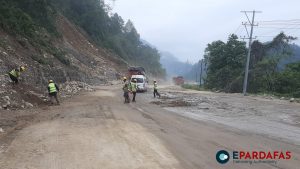
Nepal’s Border Schools Cry Out for Help

Nepal’s education sector is facing a critical challenge, particularly in its border regions. The recent revelation of Nim Lamu, a grandmother from Sandakpur Rural Municipality-5, Kalpokhari, contemplating sending her granddaughter across the border to India for education, sheds light on a deep-rooted issue that demands urgent attention.
The closure of public schools due to a lack of students has left communities in northern Ilam grappling with a dire educational crisis. Villages like Jaubari, Meghma, and Kalpokhari are witnessing a disturbing trend where parents are compelled to send their children to Indian schools, abandoning the hope of education within their own country.
The closure of the National Primary School in Jaubari for over eight years underscores the severity of the situation. The absence of initiatives to reopen these schools has pushed families to seek education across the border, eroding the educational foundation within Nepal’s borders.
The ramifications are not merely limited to educational deprivation but extend to the erosion of national identity and self-respect among Nepali children. As Pasang Tshiring Sherpa, the former principal of Rastriya Primary School, Jaubari, rightly points out, the closure of schools not only deprives children of education but also disconnects them from their roots and national ethos.
The exodus of students to Indian schools not only exacerbates the educational crisis but also poses socio-cultural challenges, as children grow up without a strong sense of belonging to their own country. The dilapidation of closed schools stands as a stark testament to the neglect faced by these border communities.
It is imperative for the authorities to intervene promptly and decisively. Efforts must be made to revive and sustainably operate schools in these border areas. The government, in collaboration with local communities and relevant stakeholders, must devise strategies to attract students back to these schools by addressing underlying issues such as infrastructure, teacher recruitment, and curriculum development.
Furthermore, there is a need for a comprehensive national policy aimed at ensuring equitable access to quality education across all regions of the country, including remote border areas. This necessitates concerted efforts to invest in educational infrastructure, teacher training, and curriculum development tailored to the unique needs of these communities.
Additionally, measures should be taken to raise awareness among parents about the importance of education and the potential consequences of sending their children across the border. Investing in community engagement and empowerment programs can foster a sense of ownership and responsibility towards local schools, thereby fostering sustainability and resilience in the face of educational challenges.
The government, civil society, and international partners must collaborate synergistically to address this pressing issue and uphold the fundamental right to education for all Nepali children, regardless of their geographical location. Failure to act decisively risks perpetuating a cycle of educational deprivation and marginalization, undermining the socio-economic development and national unity of the country.
It is time to prioritize the educational needs of border communities and ensure that no child is left behind in Nepal’s journey towards progress and prosperity. The time to act is now, and concerted efforts are required to transform this educational crisis into an opportunity for positive change and inclusive development.
- Recording Statements of Defendants, Including RSP President Rabi Lamichhane, Begins in Kaski Court
- China Warns U.S. Over Taiwan Military Aid, Accuses Washington of ‘Playing with Fire’
- 101st Birth Anniversary of Nepali Congress Founding Leader Krishna Prasad Bhattarai Commemorated
- Nepal’s Exports Rise by 16.5% in Five Months Amid Trade Deficit












Comments